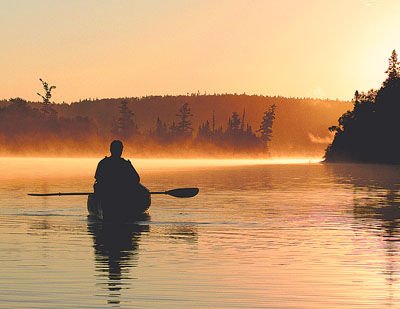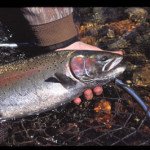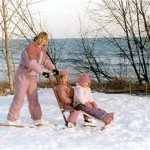It’s pretty hard to have a bad visit to the Boundary Waters Canoe Area Wilderness (BWCAW), but every year I hear stories of people who managed to do just that.
But what does it take to have a great canoe trip? Each year I get dozens of inquiries from readers of my books and articles asking me for advice on planning a trip, choosing a time of year, or selecting an entry point and route. What follows is the advice I give virtually everyone who writes.
Determine Your Goals
Just what is it you want your canoe trip to deliver? Sounds simple, but it really isn’t. Few routes can deliver on everything, so talk to your intended canoeing partners to see just what it is you want to experience. If most or all are avid anglers, a route that takes you to the better fishing lakes (yes, not every lake in the BW provides good fishing) is in order. Not only that, but if they want to target a particular species such as lake trout to the exclusion of other species, that desire will not only affect where you go, but when. For instance, the best lake trout fishing is in May, while the best small mouth fishing is in June. The worst fishing for everything is in August. In other words, if angling is your interest, routes and timing need to be designed around that.
Or are you seeking the ultimate in solitude? Not every route offers the kind of peace and quiet you may seek. Some routes, especially during the peak visitation period of mid-July to mid-August will be positively busy (a relative term, I know) but offer more solitude at a different time of year.
Gear Up Good
You don’t need the fanciest gear to go into the wilderness, but you do need good gear. If you’ve never done a wilderness canoe trip before, I strongly recommend you contact one of the outfitters that cater to BWCAW visitors. Not only can they help you in getting permits and selecting routes, they all have quality tents, canoes, packs and other needed gear. It is my opinion that the outfitters in northern Minnesota are the best in the business.
Renting gear is a great way to see what works and why without having to make an purchase investment. For instance, you may have been eyeing that fancy backpack at a store, but by first renting you’ll quickly learn just why the venerable old Duluth pack and its modern variants are superior for canoe travel.
If you want to outfit yourself, that’s great. Just make sure you do a little research first. There are several good books available, such as my own Canoe Country Camping (University of MN Press), or works by Cliff Jacobson, that explain what kind of gear works best. It’s easy enough to buy something these days that will disappoint you on the trail. Spend this winter reading up on it.
Finally, leave about half the stuff you’d like to take at home. Pare down your gear to the minimum needed. Nothing will ruin a canoe trip faster than laboring over portages all day because you’ve hauled too much stuff. You want to be fishing, reading a book, or watching the clouds drift by, not struggling like a Sherpa on Everest.
In a nutshell, the very best advice I can give is to PLAN. Plan carefully, talk to those who are more experienced than yourself, read some good books on the subject, and use the services of an area outfitter when required.
If you do, you’ll never have a bad canoe trip. And you might just have many excellent ones!
Writer/photographer Michael Furtman has written several books on the canoe country. You can learn more about his books and photography at www.michaelfurtman.com.






